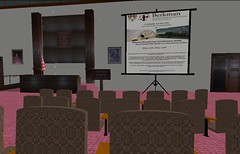Travel photo blogging: MLK Memorial in DC
Monday, January 19th, 2015 In honor of Martin Luther King, Jr. Day in the US, I am posting some photos I took at the MLK Memorial in DC when I visited there last Fall. There is no shortage of critical commentary about the memorial from when it was dedicated a few years ago. I wasn’t aware of these when I visited, which is probably a good thing as it would have tainted my visit, not necessarily justifiably as far as I’m concerned. (If you feel you must add your critical thoughts in the comments, I just ask that you try to be original.)
In honor of Martin Luther King, Jr. Day in the US, I am posting some photos I took at the MLK Memorial in DC when I visited there last Fall. There is no shortage of critical commentary about the memorial from when it was dedicated a few years ago. I wasn’t aware of these when I visited, which is probably a good thing as it would have tainted my visit, not necessarily justifiably as far as I’m concerned. (If you feel you must add your critical thoughts in the comments, I just ask that you try to be original.)
 I admit that it wasn’t a particularly targeted visit on my part. I was in town for a conference and had an afternoon to roam the city. I had been walking for hours (winding my way back from the Thomas Sweet in Georgetown to the Mall) and found myself walking on Independence Ave SW when I spotted signs to the MLK Memorial. Once I saw the signs, I knew I wanted to see it.
I admit that it wasn’t a particularly targeted visit on my part. I was in town for a conference and had an afternoon to roam the city. I had been walking for hours (winding my way back from the Thomas Sweet in Georgetown to the Mall) and found myself walking on Independence Ave SW when I spotted signs to the MLK Memorial. Once I saw the signs, I knew I wanted to see it.
I was lucky in the timing of my visit. It was early evening on a weekday, 9/11 to be precise. There was almost no one else around. This made a difference as I found the place perfect for contemplation. I entered from the northwest, which worked well as I appreciated walking through the rocks not knowing exactly what to expect.
 After looking at MLK’s figure and taking in the scene of the Jefferson Memorial that is in the statue’s line of sight, I walked from quote to quote and reflected on each, especially given the Ferguson events still fresh in memory. I was able to do all of this almost in solitude. The early evening light added to the mood.
After looking at MLK’s figure and taking in the scene of the Jefferson Memorial that is in the statue’s line of sight, I walked from quote to quote and reflected on each, especially given the Ferguson events still fresh in memory. I was able to do all of this almost in solitude. The early evening light added to the mood.
If you can, I recommend visiting early evening or perhaps early morning on a weekday when you may have the place mostly to yourself. Be sure to give yourself time, it wouldn’t have been the same had I felt rushed.









